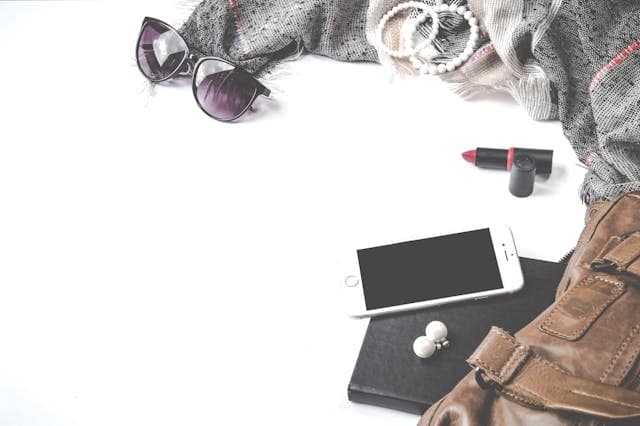Do you agree that the line between “fashion design” and “art project” is thinner than a silk thread these days? You see it everywhere: runways that look like art galleries, fashion students turning their mood boards into installations, and designers who quote Picasso instead of Prada. It’s no surprise that the new generation of creators is thinking less like stylists and more like artists with sewing machines.
Take Alexander McQueen, for example. The guy didn’t just design clothes — he staged full-on theatrical performances. His 1999 runway show where model Shalom Harlow got spray-painted by robotic arms? That wasn’t fashion; that was a visual masterpiece in motion. Students studying design today still reference it when working on arts assignment help projects about the fusion of technology and creative identity.
Or look at Virgil Abloh, the Off-White founder who blurred every border between streetwear, architecture, and conceptual art. His work screamed that sneakers could carry as much cultural weight as a sculpture. That same philosophy has found its way into classrooms, where art professors ask students to research the artistic message behind urban clothing. And when those assignments pile up, students often look for a bit of art homework help to put their thoughts into words without losing the creative spark.
Why does modern fashion education encourage artistic thinking?
It’s not just high-end brands driving this mix. Even thrift store aesthetics and DIY patches have become part of visual storytelling. Streetwear now carries social messages, personal expression, and political commentary. And because of that, arts homework writing services are no longer just for painters or sculptors — they’re for any student trying to explain why a hoodie can mean more than just comfort.
So yeah, fashion is no longer just about fabrics and silhouettes. It’s about meaning. About context. About translating what you feel into something others can see. Which raises the next big question — if fashion is already half art, what exactly is this thing everyone’s calling art-based research?
What Exactly Is Art-Based Research in Fashion Studies?
Imagine you’re studying fashion design, but instead of writing a boring essay about color theory, your professor tells you to show it. You spend weeks experimenting with spray paint, stitching recycled fabric, or photographing light reflections on glass just to express your concept. That’s art-based research — it’s hands-on, expressive, and honestly, a little chaotic. But that’s what makes it magic.
Examples of art-based research projects
Art-based research basically means using creative methods — drawings, photography, sound, or performance — to explore big questions in fashion. Instead of reading pages of theory, students create theory through their art. For instance, at Central Saint Martins in London, a group of students turned their semester project into a visual protest against fast fashion. They built a sculpture entirely out of discarded denim to highlight waste culture — and their written reflection became the backbone of their art essay writing service-level analysis.
Fashion schools from New York to Milan are catching up fast. Professors now push their students to explore cultural identity, sustainability, and social commentary through visual art, not just written reports. Some students make interactive installations; others design virtual outfits that exist only in digital space. But even the most visual ideas need strong words to match — and that’s where art homework writing service professionals step in to help polish those reflections into something publishable.
This trend is more than academic — it’s cultural. As fashion grows more expressive, students are no longer content sketching dresses; they’re trying to say something. From graffiti-inspired prints to wearable sculptures, they use every project as a canvas. Art-based research lets them build their own creative logic — something that goes way beyond sewing patterns or design software.
Now that we’ve got a grip on what art-based research actually is, it’s time to ask why students are so hooked on it. Is it just another buzzword, or is it reshaping how the next generation of designers learns, creates, and expresses themselves?
Why Are Students Preferring Art-Based Projects Over Traditional Essays?
Let’s be real — not everyone vibes with academic writing. Try forcing a design student to write a 3,000-word essay about “postmodern color theory,” and watch the creativity drain out faster than coffee at 2 a.m. That’s exactly why art-based projects are taking over fashion classrooms. They give students space to express what they feel instead of forcing them to explain it like a textbook.
Today’s design culture runs on visuals, rhythm, and bold self-expression. Art-based projects let students show how they see the world, not just describe it. For instance, a group of students at Parsons School of Design recently replaced a traditional research paper with a 3D-printed clothing concept that symbolized “digital identity.” Instead of paragraphs, they used materials, color, and movement to communicate their idea. Their professor loved it — and their short reflection essay (edited with help from an art essay writing service) tied the creative and theoretical sides perfectly.
This shift also matches how Gen Z communicates: fast, visual, and real. Instead of academic jargon, they build digital portfolios, post their process on TikTok, and share sketches on Instagram. In their world, a video showing how they stitched recycled plastic into couture says more than 20 footnotes ever could. Still, at the end of the semester, schools need structure — and that’s where tools like arts homework writers or essay writing service for arts specialists step in to help them translate creative chaos into academic language.
The rise of experiential learning in design schools
Many students say that writing about their projects helps them “see” their own ideas clearly. But let’s face it — when deadlines hit, and you’re juggling design prototypes, mood boards, and sewing samples, words can feel like an extra obstacle. That’s when having reliable art term paper writing service support makes a world of difference. It doesn’t kill creativity — it frames it. It turns “this looks cool” into “this explores the emotional symbolism of urban decay through texture and silhouette.” Sounds way better, right?
So, it’s not that fashion students hate writing — they just want writing that matches their creativity. But how do they keep that spark alive while staying on top of academic expectations? That’s where professional writing support steps in, not to change their voice but to help it come through clearly.
How Can Professional Art Homework Writing Services Support Creative Students?
Let’s be honest — creative students aren’t lazy; they’re just busy. Between late-night sewing marathons, inspiration boards that keep evolving, and endless critique sessions, sitting down to structure a formal paper feels like running uphill in heels. That’s why so many turn to art homework writing service teams to make their academic side just as strong as their creative one.
Saving time without losing originality
Think of it like having a stylist for your thoughts. You bring the raw fabric — your concept, your research, your messy notes — and professional arts homework writers help cut, fit, and polish it until it’s runway-ready. They don’t rewrite your vision; they help it shine. A friend of mine at London College of Fashion once said, “I can sculpt meaning out of fabric, but not out of a citation list.” With help from an arts homework writing services editor, her reflective report went from scattered to spectacular, earning her a top distinction.
These writing experts understand the art-school mindset. They know your essay shouldn’t sound like a corporate report — it should sound like you. They help keep your tone expressive while ensuring it ticks the academic boxes: structure, theory, referencing. It’s a win-win.
And here’s the cool part — many essay writing service for arts platforms now specialize in creative research. So if you’re building an installation about identity or a collection inspired by surrealism, they’ll help you explain it in a way that makes your professors go, “Okay, this person actually gets it.”
Let’s face it — in today’s creative education, good writing is part of good branding. Your words tell your story when your clothes can’t. So having that support isn’t cheating; it’s collaborating. Think of art homework help as your silent creative partner — the one who turns your creative chaos into an academic masterpiece.
So now that students have both the creative freedom and the right backup to express it, what’s next? Fashion education is clearly changing — and it’s about time we looked at how art-based research is shaping the future of design itself.
What Does the Future of Art-Focused Fashion Education Look Like?
If the last few years are any sign, the future of fashion education is getting wild — and that’s a good thing. Gone are the days of simple fabric swatches and color wheels. Students are turning classrooms into mini art studios, experimenting with AI-generated patterns, body-positive sculptures, and digital couture. Creativity doesn’t stop at sketchbooks anymore; it spills onto screens, sidewalks, and even the Metaverse.
Fashion schools are realizing that to stay relevant, they need to push creativity like never before. Instead of memorizing design terms, students now learn through making. They explore real-world issues — sustainability, inclusivity, mental health — using art as both a method and a message. For example, students at Istituto Marangoni recently created a fashion-art hybrid exhibition called “Wearing Emotion,” where garments changed color based on the wearer’s heartbeat. It was art-based research in its purest form — emotion stitched into innovation.
This evolution is also transforming how academic support works. Arts homework writing services aren’t just cleaning up essays anymore; they’re collaborating with students on reflective portfolios and visual analysis reports. They help bridge the gap between creative chaos and academic clarity — because you can have a groundbreaking concept, but if you can’t explain it, your professors might just miss the genius.
Why written analysis will always matter
And yes, even art term paper writing service providers are shifting gears. Instead of writing stiff research papers, they’re helping students blend visuals, culture, and storytelling into analytical formats that actually feel alive. The point is no longer to just “submit a paper,” but to document an experience. The next generation of designers won’t just be fashion-forward — they’ll be art-literate, tech-savvy, and culture-aware.
So where does all this leave us? Art and fashion are already mingling like old friends at a creative block party. But beyond the trend, there’s a deeper takeaway — one that’s reshaping how young designers think about meaning, identity, and the craft of creation itself.
Can Art Make Fashion Education More Meaningful?
Short answer? Absolutely. Art gives fashion a soul. It turns a simple piece of fabric into a statement, a runway show into a conversation, and a school project into something unforgettable. That’s why more students are leaning on artistic thinking to make sense of the world around them — because creativity without meaning just feels empty.
Art as a bridge between emotion and design
Think about it. Anyone can design a “pretty outfit.” But it takes an artist’s mindset to tell a story through fabric — to say something about culture, emotion, or social change. When students mix art-based research with fashion, they stop following trends and start creating them. That’s what makes their work stand out in portfolios, exhibitions, and future brands.
Of course, creativity isn’t always easy to translate into words. That’s where art homework help and essay writing service for arts experts come in clutch. They make sure your bold ideas don’t get lost in translation. They help you express the why behind your concept, without watering it down. It’s not about outsourcing your voice — it’s about amplifying it.
Final Thoghts
At the end of the day, art and fashion share the same DNA: both are emotional, rebellious, and human. Together, they push us to question, to feel, and to imagine.
So, if you’re a fashion student experimenting with bold concepts, don’t be afraid to think like an artist — and if you ever need a hand putting that creativity into words, a professional art homework writing service has your back. Because in the world of design, your next masterpiece might just start with an idea — and end with an essay.
Fashion education is no longer about following patterns — it’s about breaking them. And with the rise of art-based research, students aren’t just creating clothes; they’re crafting culture.







